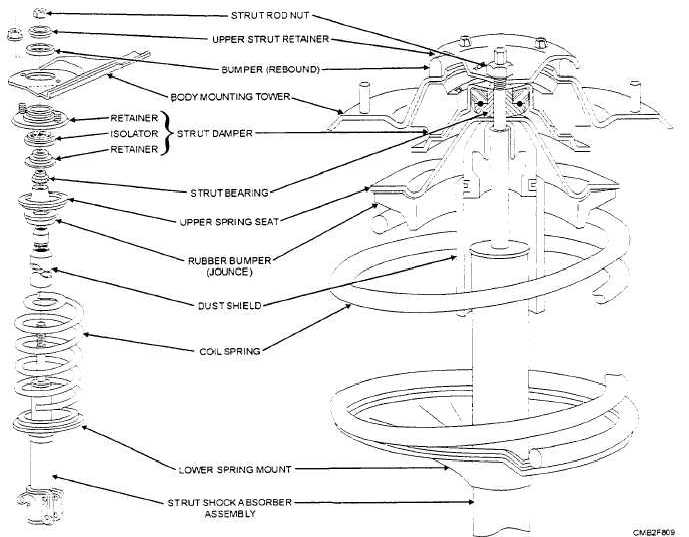Home > Construction Training Manuals > Construction Mechanic Basic Volume 2 > Figure 8-9.Exploded And Cutaway Views Of A Strut Assembly
basic components of a typical strut assembly, are as follows (fig. 8-9):
STRUT SHOCK ABSORBER - piston-operated oil-filled cylinder that prevents coil spring oscillations.
DUST SHIELD - metal shroud or rubber boot that keeps road dirt off the shock absorber.
LOWER SPRING SEAT - lower mount formed around the body of the shock absorber for the coil spring.
COIL SPRING - supports the weight of the vehicle and allows for suspension action.
UPPER STRUT SEAT - holds the upper end of the coil spring and contacts the strut bearing.
STRUT BEARING - a ball bearing that allows the shock absorber and coil spring assembly to rotate for steering action.
RUBBER BUMPERS - jounce and rebound bumpers which prevent metal-to-metal contact during extreme suspension compression and extension.
RUBBER ISOLATORS - parts of the strut damper which prevents noise from being transmitted into the body structure of the vehicle.
UPPER STRUT RETAINER - mounting that secures the upper end of the strut assembly to the frame or unitized body.
In a MacPherson strut type suspension, only one control arm and a strut is used to support each wheel assembly. A conventional lower control arm attaches to the frame and to the lower ball joint. The ball joint holds the control arm to the steering knuckle or bearing support. The top of the steering knuckle or bearing support is bolted to the strut. The top of the strut is

Figure 8-9. - Exploded and cutaway views of a strut assembly.
Continue Reading